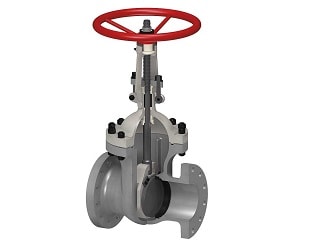A Brief Introduction to Ball Valves
Valves are generally divided into several types to reach their particular specifications and functions. Now, a deep look at the ball valve is taken here. Similar to other valves, a ball valve is usually used to control the flow. The featured part is a spherical disc, which controls the flow through it.
And there is a hole or port in the middle of the sphere. In fact, the two end of the valve determines a lot. When the two ends of the valve in line, flow will occur. And when the valve is closed, the hole is perpendicular to the ends of the valve, and flow is blocked. During this process, the handle or lever will do a great favor being inline with the port position Globe valve.
Basing on particular specifications and easy operation, ball valves are used extensively in industry as a result of versatility and wide range of supporting pressures and temperatures. And sizes typically range from 0.5 cm to 30 cm. Generally speaking, materials for the body are metal, plastic or metal with a ceramic center. And the ball is often chrome plated to enhance the durability and make the valve work perfectly at shutoff.

In order to reach some specific industrial requirements, ball valves are further classified into several types. From the perspective of body types, they are single body, three piece body, split body, top entry and welded. It is to say that the classification is based on the number of pieces of the valve. Though there are different types of valves, the operation is similar. And from the perspective of the bore of the ball mechanism itself, there are also many styles.
They are a full port, reduced port, V port, trunnion and cavity filler ball valve. What's more, manually operated ones can be closed quickly. And some are equipped with an actuator that may be pneumatically or motor operated. Those valves are usually equipped with a positioner. By doing this, it is easy for it to transform the control signal into actuator position and valve opening accordingly. For example, multi-port ball valves are generally with 4 ways, or more. They are also commercially available. And for the driving air-powered motors from forward to reverse, the operation is performed by rotating a single lever 4-way ball valve. What else, one piece ball valves are almost always reduced bore, which are relatively inexpensive and generally are throw-away. And two piece ones are generally slightly reduced (or standard) bore, they can be either throw-away or repairable non slam check valve.
In words, some general ideas about the ball valves have come into your mind, I suppose. Hope they would be widely used in order to improve the industry, as well as our daily life.